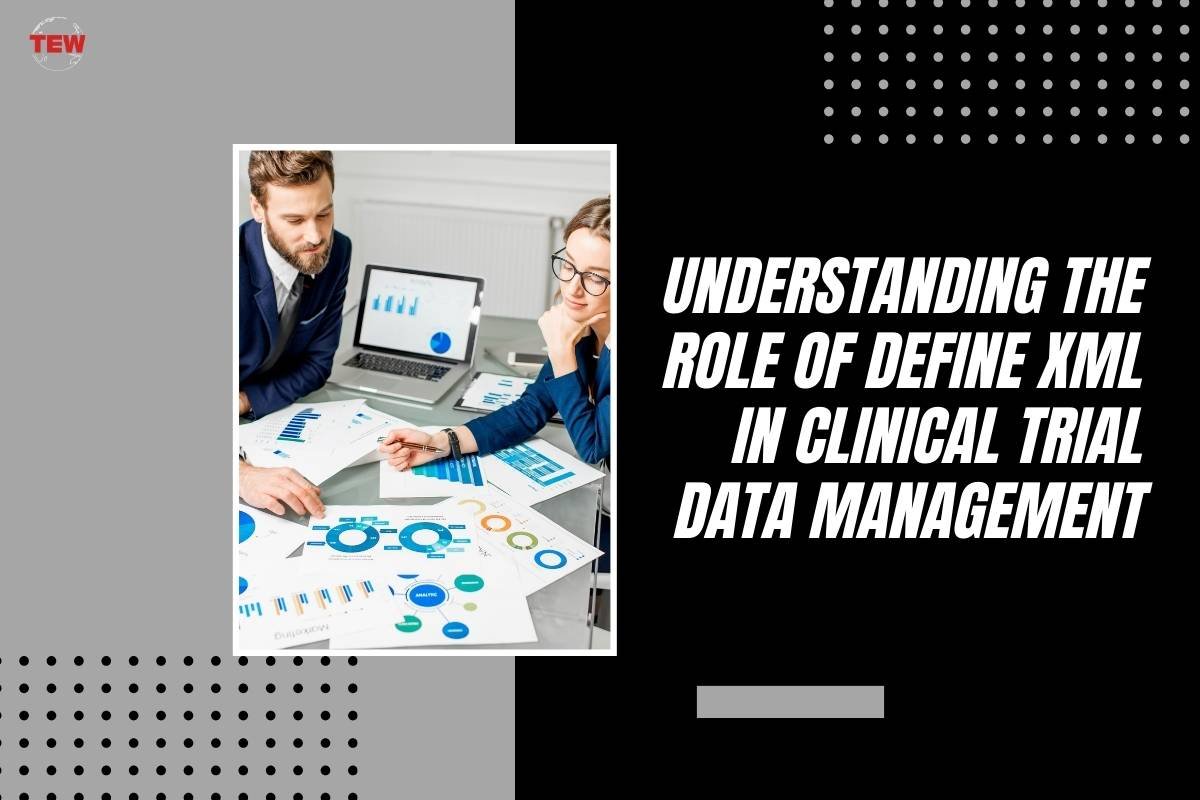A clinical researcher knows every study requires poring through data from hundreds of patients across multiple trials and sources. These datasets provide a goldmine of essential data—for instance, blood pressure readings, demographics, and medication logs.
As a result, documents might pile up, and it’s easy to feel overwhelmed with recording, updating, and analyzing volumes of information, which sometimes speak different languages. This is where define.XML or Extensible Markup Language can help.
At its core, this tool is the unsung hero of clinical trial data management, allowing you to structure and organize data in a simple yet powerful way. Beyond data organization, XML enables seamless communication among various stakeholders involved in every clinical trial. But what is define.XML, and why is it crucial? Let’s find out.
Define.XML in a Nutshell
Think of XML as a universal translator for your clinical trial data. It’s a file written in a special code that acts like a detailed map, meticulously documenting every piece of information collected. Each data point has a clear definition, its origin is documented, and how it should be interpreted is laid bare. This meticulous organization is a game-changer for managing your clinical trial data efficiently.
How to Leverage XML?

While creating an XML file does require some technical knowledge, there are resources available to help you on your journey:
- Start Early: Integrate XML creation into your early study planning stages. This ensures that everyone involved understands the data structure from the get-go.
- Seek Help: Leverage the expertise of clinical trial data management professionals or specialized software that can assist you with creating and managing XML files.
- Stay Updated: XML is an evolving standard. Keep informed about the latest updates and best practices to ensure efficient clinical trial data management. Learn the do’s and dont’s of defining XML to optimize the tool further.
For smoother teamwork, distribute the XML file to all stakeholders involved in the study, including researchers, statisticians, and programmers. Encourage everyone to familiarize themselves with the data structure documented within. This promotes clear communication and avoids confusion during data analysis.
Here’s how XML empowers you on your clinical trial data management journey:
1. Serving as the Backbone of Electronic Data Capture (EDC) Systems
Define.XML bridges the gap between the diverse systems and software used by sponsors, clinical research organizations (CROs), regulatory bodies, and other key players. By adhering to standardized XML formats, such as the Clinical Data Interchange Standards Consortium (CDISC) models, you can ensure that your clinical data is consistently understood and interpreted, regardless of the tools or platforms employed.
With define.XML, you can bid farewell to the days of error-prone paper forms and manual data entry. Instead, your trial data flows seamlessly from the source – whether it’s an electronic case report form (eCRF) or a wearable device – directly into your EDC system, reducing the risk of transcription errors and saving countless hours of tedious work.
2. Ensuring Data Quality

XML acts like a data quality checkpoint. When your data arrives, it can be automatically compared against the pre-defined parameters in the XML file. This catches errors early on, saving you the headache of manually sifting through mountains of data later.
Pro tip
This platform allows you to set specific data validation rules within the file. For example, you can define a range of acceptable blood pressure values. Any value outside this range will be flagged for review during data import, ensuring data integrity.
3. Promoting Data Consistency
Beyond these benefits, define.XML fosters collaboration by creating a shared data language. Imagine researchers at different sites collecting data on “blood pressure.” One might record it in millimeters of mercury (mmHg), another in kilopascals (kPa). XML ensures that everyone uses the same units and definitions, eliminating confusion and inconsistencies.
Pro Tip
Platforms like define.XML include a specific element called “ControlledVocabulary” that allows you to set acceptable units for each data point. In this case, you’d specify mmHg as the preferred unit, with an option to convert kPa values during data import.
4. Facilitating Automation and Efficiency
The power of define.XML lies in its ability to streamline and automate processes that would otherwise be mind-numbingly tedious. It can automatically generate patient narratives, statistical analysis datasets, and regulatory submissions from your carefully curated XML data. As such, it transforms your clinical trial data into a well-oiled machine, churning out the reports, analyses, and documentation you need with minimal manual effort.
XML files can be reused across studies. With it, you no longer have to scramble to understand cryptic data from previous trials. This saves you time setting up new studies and allows for seamless data comparison across different trials, accelerating research progress.
Pro Tip
Develop a library of standardized XML templates for commonly collected data points like demographics or medication logs. When starting a new study, you can adapt these templates to fit your needs, saving significant time and effort.
5. Adhering to Regulatory Requirements

The regulatory landscape is a minefield of constantly evolving guidelines and submission requirements. With XML-based data standards like CDISC, you can sleep soundly knowing that your clinical trial data is formatted to meet the regulatory requirements set by the Food and Drug Administration (FDA) and the European Medicines Administration (EMA). No more scrambling to reformat data or risk costly delays in submissions and approvals.
Pro Tip
Regulatory agencies have specific data submission requirements; XML files are often the gold standard. Utilize these templates as a starting point, ensuring your data adheres to all regulatory guidelines.
Your Lifeline for Efficient Clinical Trial Data Management
So, the next time you’re drowning in a sea of clinical trial data, remember that define.XML is your lifeline. By embracing this versatile markup language, you’ll gain a powerful ally in organizing and managing your data and unlock a world of efficiency, collaboration, and regulatory compliance – all while keeping your sanity intact. It paves the way for faster, more efficient clinical trials that bring us closer to groundbreaking medical discoveries.




